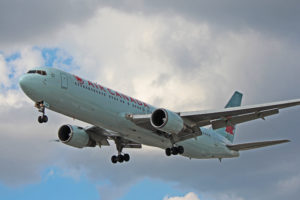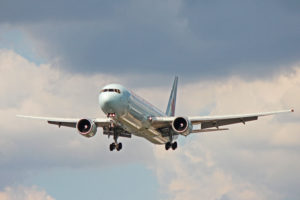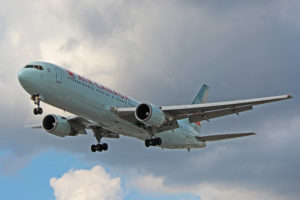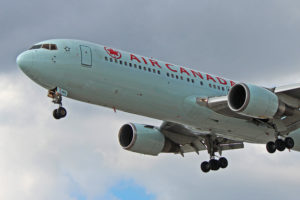*Update April 18, 2018*
This aircraft was put into storage by Air Canada in March, 2018 and will be scrapped.
We photographed C-FCAG at Toronto Pearson International Airport (YYZ) while plane spotting back on September 14, 2017. The Air Canada Boeing 767-300ER was originally delivered to Canadian Airlines back in 1988, just after the first B763 variant entered service. This just may be one of four that the airline will phase out in 2018.
For full-size, high resolution versions of any of the photos in the image gallery, simply click on the individual pictures. See below for more detailed information on C-FCAG, the Boeing 767-300ER model in general and the airline.
Image Gallery
C-FCAG
Boeing 767-300ER
Air Canada
Resources
C-FCAG Air Canada Boeing 767-300ER Image Gallery
C-FCAG
C-FCAG took its maiden flight on May 10, 1988 and was delivered to Canadian Airlines on May 19, 1988. When Canadian ceased operations, the Boeing 767-375ER was transferred to Air Canada on March 29, 2001. The B763 is configure for a maximum total of 211 passengers with 24 seats in business class and 187 more in economy class. This is one of eight Boeing 767-300ER aircraft remaining in the main Air Canada fleet with four of those eight to be phased out by the end of 2018.
On October 25, 2012, C-FCAG was flying from London, England to Calgary, Alberta. At 38,000 feet, near Ft. McMurray in northeast Alberta, a coffee maker in the forward galley began to smoke. Crew switched off both utility electrical buses off and the smoke subsided. The flight continued without further incident. The faulty coffee maker was replaced.
The following month, on November 20, 2012, the B763 was flying from Vancouver, British Columbia to Seoul, South Korea. At 30,000 feet, about 360 miles out of Vancouver, the aircraft was diverted back to YVR due to a generator failure.
On March 1, 2015, the Boeing 767-300ER was flying from Calgary to Kahului, Hawaii. Climbing out of YYC, C-FCAG began to have trouble with the right side engine’s thrust lever and also experienced fluctuations in the right side cabin duct pressure. The aircraft diverted to Vancouver for a safe landing. As a result, the strut area push/pull cable and the right side engine’s pressure shutoff valve were replaced.
On the day after we photographed this aircraft, September 15, 2017, C-FCAG was flying form Toronto, Ontario to Calgary, Alberta. At 10,000 feet on the climb out of YYZ, crew detected an electrical burning odour in the cabin. The aircraft was diverted back to Toronto for a safe landing. The culprit was and overhead light ballast between rows 13 and 14. the ballast was replaced and the issue was resolved.
Boeing 767-300ER
The initial Boeing 767 variant entered service with United Airlines in 1981 and the first Boeing 767-300ER was introduced with American Airlines in 1988. In all, 583 were delivered. The B763 is 55 metres or 180 feet in length with a wingspan of 48 metres or 156 feet. At the tail, the aircraft stands 16 metres or 52 feet in height. The flight range is 11,070 kilometres.
Air Canada
Air Canada was founded in 1937 as Trans Canada Air Lines and commenced operations officially under the current name in 1965. The airline is headquartered at Montreal Pierre Elliott Trudeau International Airport in Dorval, Quebec and is a founding member of the Star Alliance.
The airline has a main fleet of around 175 aircraft flying to over 200 destinations around the world. With subsidiaries added in, those numbers increase to over 400 airliners flying to 350 destinations worldwide. The largest in the fleet is the Boeing 777-300ER while the smallest in the main fleet is the Embraer E190.
Resources





